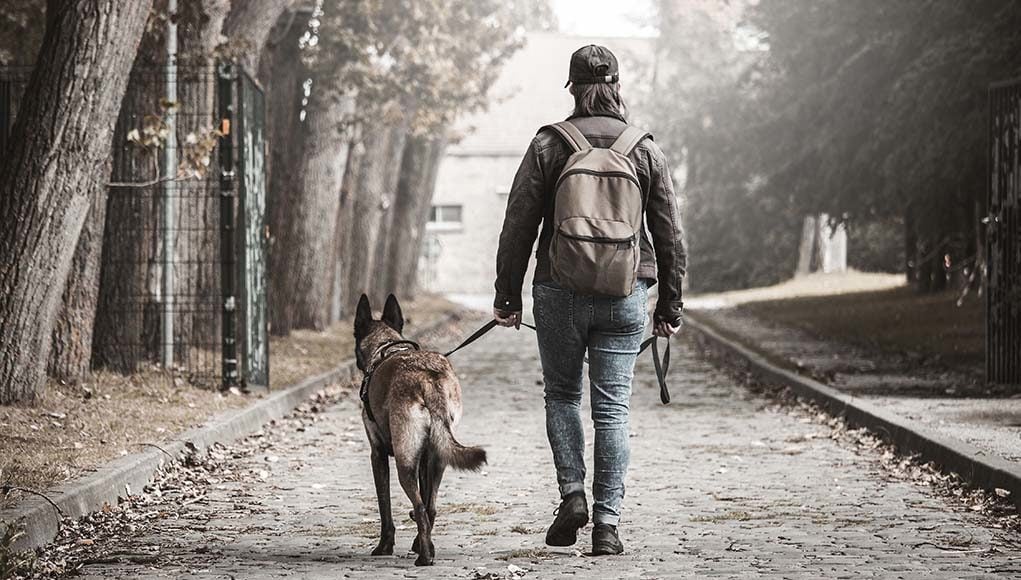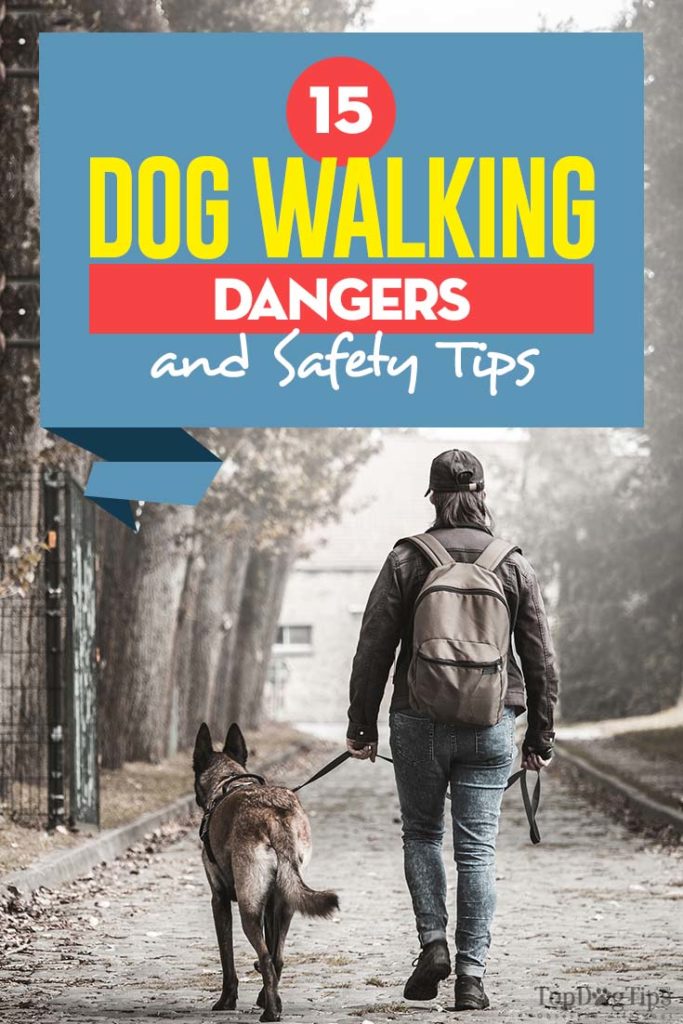It cannot be avoided – taking your pooch for walks everyday is necessary as an exercise routine, for bathroom breaks and playtime activity. But daily dog walking, especially when you live in a city, can pose its own dangers, something new and even veteran pet owners sometimes forget.
Professional dog walkers have noted before about all the potential hazards lurking around, posing risk to dogs and owners alike. As a pet owner, you must practice dog walking safety and take precautions. Here are 15 dog walking dangers to consider and how to keep yourself away from these problems.
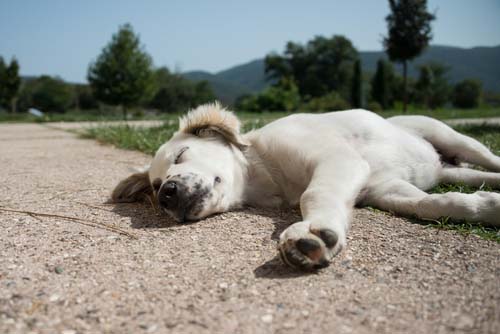 Exhaustion
Exhaustion
If you have a senior dog, an arthritic dog, or if your pooch is not in the best shape of his life, exhaustion is a real danger. A tired dog is a good thing, but an overworked dog is at risk, according to animal scientists. Make sure that on longer walks your Fido is safe from getting overworked, especially if he's older.
Here’s what you must do:
1. Get a Physical
Your vet should clear your dog for any new activity, especially if you have a very old or a very young dog. If needed, have some anti-inflammatory or pain medication on you to help your do stay comfortable during the walk. Even getting a physical yourself might not be a bad idea if you haven’t been exercising regularly.
2. Start Slow
Just as you wouldn’t run a marathon the next day after you've decided to do it without any preparation, you shouldn’t put too much exercise stress on your dog as well. Start with short walks and work your way up to longer distances.
This is applicable to young puppies, senior or overweight dogs, those recovering from surgeries or illnesses. Keep the pace down and gradually increase it with every additional walk.
3. Stay Hydrated
Both you and your dog need to stay hydrated, especially in hot weather since the risk of heatstroke is much more serious. When you know you're going for a longer walk, always have a bottle of water for you and your dog, or have a bowl with you if your canine is not trained to drink out of the bottle. There are special dog water bottles that make it easy for both the owner and the dog.
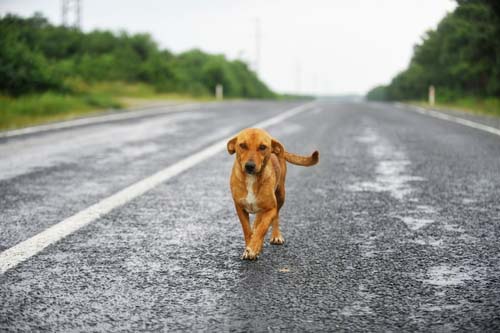 Traffic
Traffic
The biggest danger that is always present for pet owners living in cities is vehicle traffic. There is no official statistic of how many dogs are hit by cars, but from news outlets we know that there have been many accidents, and when it comes to all animals, statistics show that cars are the number one killer in the U.S. One moment of not paying attention could result in your pooch getting hit by a car.
Here’s what you must do:
4. Choose the Right Equipment
When you're picking a dog leash, it's crucial that you choose quality and reliable material like cotton, leather or nylon. The leash should be 4 to 8 feet long. Avoid using a retractable dog leash because they allow your dog too much freedom and less control for you.
Most retractable leashes also reward your dog for pulling since they exert back pressure on the collar. Also, you won’t be able to reel in the leash quickly if your dog lunges at other dogs or people.
Ideally, a dog harness is what you must use instead of a leash, for several reasons: (1) it provides more control for you, (2) it's more comfortable for the dog, (3) it's more safe and less damaging than dog leashes, according to studies. A dog harness can also be reflective, which makes your pooch more visible near traffic.
Make sure that all of your dog’s walking equipment works properly. Check the leash or harness for any missing parts or tears, and ensure the harness or collar are properly fitted. Improper fit can be the deciding factor when it comes to traffic accidents. And any other equipment malfunction may be the reason your pooch gets away from you, often right onto the busy street.
5. Choose a Quiet Route
It's better to be safe than sorry. Go for a walk in your neighborhood or take your dog to a local dog park where he can run and have fun without a leash or harness.
Avoid busy streets with heavy traffic and a lot of noises that can excite your dog, or make him anxious and stressed. If you want to explore new roads and paths, better do it on your own first to familiarize yourself with the area before bringing your dog along.
6. Follow Traffic Safety Rules
It goes without saying that it's not the right time to be rebelling near traffic when you have your pooch by your side. Follow the rules, don't jaywalk, and walk on sidewalks whenever you can.
If there are no sidewalks on your route, walk on the left side of the street so you can face the oncoming traffic, and keep your dog to your left and without allowing him too much freedom.
7. Stay Visible
If you plan to go on an evening walk or you might stay outside when the evening falls, wear reflective clothing yourself, and get a reflective dog collar, leash and/or harness for your pooch so both of you can be visible to drivers. There are LED collars you can use which provide the most visibility. You can also bring a flashlight with you for these occasions.
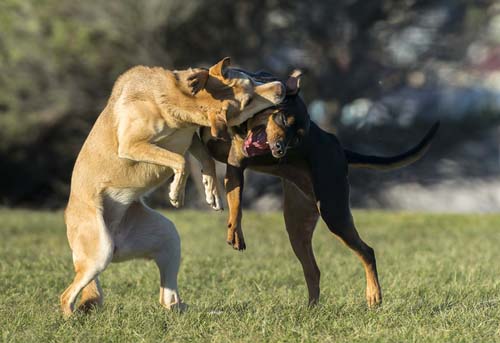 Other Dogs
Other Dogs
You will most probably encounter other pet owners with their dogs on your walk and that can sometimes lead to altercations. There have been many reports of bad pet owner behavior that puts every party involved at risk.
Trainers are now teaching dog owners how to behave in those instances, because more people encounter walking injuries. Even if your dog is not aggressive and not a danger to others, this isn’t necessarily the case with other dogs and it's better to be prepared.
Here’s what you must do:
8. Avoid Other Dogs
If you see a dog coming your way, whether it is a stray by himself, or a dog walking with the owner, the safest thing to do is to move out of the way. Even if the other dog seems relaxed and friendly, things can quickly change because animals are unpredictable. Just read these dog park horror stories about the most unexpected things happening.
9. Watch Their Behavior
If you do come across another dog, keep an eye of the body language of both dogs. Barred teeth, firm stances and ears pulled back or forward are good indicators of aggression in dogs.
Dog body language guides have all the basics explained. Get the dogs apart as soon as you notice this. Also, do not tighten your grip on the leash since that can send a signal to your pooch that something is wrong and increase the tension.
10. Be Prepared for Altercation
Even if you try your best to prevent a fight, dogs will be dogs and this can still happen sometimes. If your Fido gets into a fight with another dog, there is a way to deal with this safely and effectively.
Try to put a barrier between them. It's a good idea to have pepper spray with you since it can be a very effective way to break a couple of fighting dogs up without risking an injury (or better yet, a pet-safe dog repellent). Water can work well also, so have a bottle with you at all times to pour the water on fighting dogs if necessary.
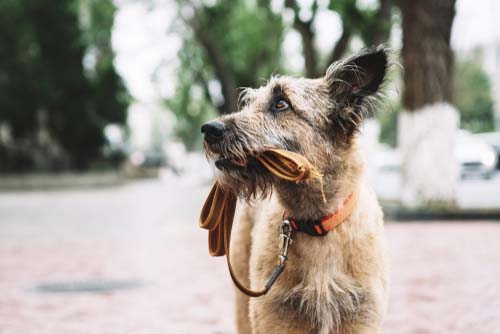 Getting Lost
Getting Lost
Dogs get lost all the time. A 2012 study found that about 15% of owners have lost a dog, and while there's no official statistics for a number of lost dogs, the estimated number is in millions.
To avoid this, ensure that your dog’s walking equipment is fully functional, otherwise your dog can get away from you and get lost. But even when you do everything to prevent this, dogs can sometimes slip out of their collars or even run away with their equipment on, especially if something scares them.
Here’s what you must do:
11. Carry the IDs
Both you and your dog should carry identification. You can (and should) place an ID tag with your dog’s name and your phone number on his collar. Collar tags are great for quick identification of a pet. However, both collars and ID tags can get lost, so it’s good to have a “safety net” in the form of a microchip.
ASPCA experts from the above mentioned study explain the importance of microchipping our dogs. Microchip is inserted under your dog’s skin and carry ID information that can be accessed with specific scanners.
Most of the veterinary hospitals, pounds and rescue facilities have these scanners and you will have better chances of reuniting with your lost dog if you microchip him.
12. Bring a Flashlight
Bring a flashlight with you on your daily dog walks. You can get lost if you are walking during the night away from home, or during the winter months when it gets darker earlier. When you have a dog by yourself, it's just that much more complicated. Even a small flashlight that fits into a small jeans pocket can save your or your pet's life or prevent some problems.
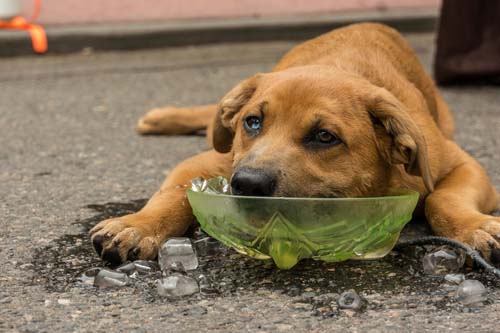 Weather Conditions
Weather Conditions
Walking with your dog in extreme weather conditions poses a ton of its own risks, and this can lead to your dog getting sick or hurt. Take precautionary measures if you plan to walk your Fido when it is way too hot or much too cold outside.
Here’s what you must do:
13. Prepare for Cold Weather
Walking your dog in winter is different than any other time of the year, especially if you live where you get snow and ice. If the weather outside is too cold and you're going for a longer walk, ensure your pooch will be warm. You can put on a doggy sweater or a coat on your Fido.
If you have a breed that is naturally “dressed” for cold with a thick fur, like a Husky or a Malamute, this won’t be necessary. What's even more important is to keep your dog's paws healthy. Consider getting dog winter boots, especially if there is snow and ice on your path – this can hurt your pet's paws.
14. Prepare for Hot Weather
Once again, weather conditions that are too hot are no better than cold months. Keep your dog's paws safe with summer dog shoes. While they can keep his feet warm in the winter, they isolate heat and can keep your dog cool in the summer, because asphalt is hot and very damaging to pet paws.
If you can, take your Fido for a walk early in the morning or in the evening to avoid afternoon temperatures that are much too hot. And remember to keep your dog hydrated.
15. Plan Your Route
If you plan to walk your dog in extreme weather, it's good to pre-plan your route ahead of time and avoid any unpredictable situations and dangers. When you know where it is, you can avoid walking your dog on ice and snow in the winter, and avoid walking on hot concrete in the summer.
Also, check your dog’s paws after every walk, regardless of the weather, to make sure that there aren’t any cuts or bruises on his paws. Dog paw health is important but is often of the most commonly ignored aspects of dog care.
READ NEXT: 8 Tips for Walking Your Dog Safely Every Single Day


